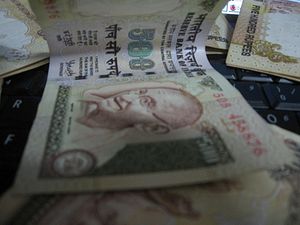In an unexpected move, India’s Prime Minister Narendra Modi announced in a special address on Tuesday evening that Rs 500 and Rs 1,000 notes will be demonetized. His public address has galvanized panic across the country.
The move is meant to weed out rampant corruption, black money, false currency, and in turn help tackle broader issues fueled by these activities, such as poverty and terrorism. Modi pointed out in his address that fake notes from outside of India were being used to fuel terrorism activity within the country.
The Rs 500 and Rs 1,000 notes will not be legal tender as of midnight on November 9. New Rs 500 and Rs 2,000 denomination notes will be released and circulated soon. Other currency notes such as Rs 100, Rs 50, Rs 20, and Rs 10 and coins will continue to be a part of the country’s financial system. Moreover, all cashless transactions will continue as usual.
ATMs across India are expected not to work on November 9 and in some areas on November 10. All banks will be closed for public work on November 9, in order to tackle the influx of people wanting to deposit their notes.
Indians can deposit their currency notes of Rs 500 and Rs 1,000 in post offices and banks for the next 50 days, until December 30, 2016. After December 30, 2016, these notes will be demonetized with no monetary value.
During his address on Tuesday, Modi announced some protections put in place to ensure that no one loses their money due to the unexpected move.
“Your money is yours. You will not lose anything. The government will ensure that,” Modi said during his address on Tuesday.
“We should be able to make the sacrifice of adjusting to such a move in the national interest, as it aims to tackle the evils of corruption, black money, fake currency, and terrorism,” he added.
“Corruption and black money had come to be considered a truth of life. They have been eating away like termites at our national interest. This can no longer be permitted.”
Modi also announced a series of protections to ensure that emergency services such as medical payments do not get affected by the move. Some exceptions have been made; Rs 500 and Rs 1,000 notes will be accepted until midnight on November 11 at places where an emergency may arise: hospitals, petrol pumps, railway reservation counters, crematoriums, and airports.
The surprise call came almost immediately after Modi hosted a meeting of the Union Cabinet. Modi had also met National Security Adviser Ajit Doval and the chiefs of the armed forces earlier on Tuesday.
The move to scrap Rs 500 and Rs 1,000 notes is designed to bring billions of dollars worth of unaccounted money into the mainstream economy. India is largely a cash-dominated economy; hence it is difficult for the government to trace tax evaders.
This is not the first time India has demonetized currency notes. According to the Reserve Bank of India (RBI), Rs 1,000 and Rs 10,000 banknotes were scrapped in 1946. Then in 1954, currency notes for Rs 1,000, Rs 5,000, and Rs 10,000 were reintroduced into the financial system. Rs 1,000, Rs 5,000 and Rs 10,000 notes were withdrawn from the financial system in 1978.
Roshni Kapur is a graduate student at the University of Sydney majoring in Peace and Conflict Studies.

































